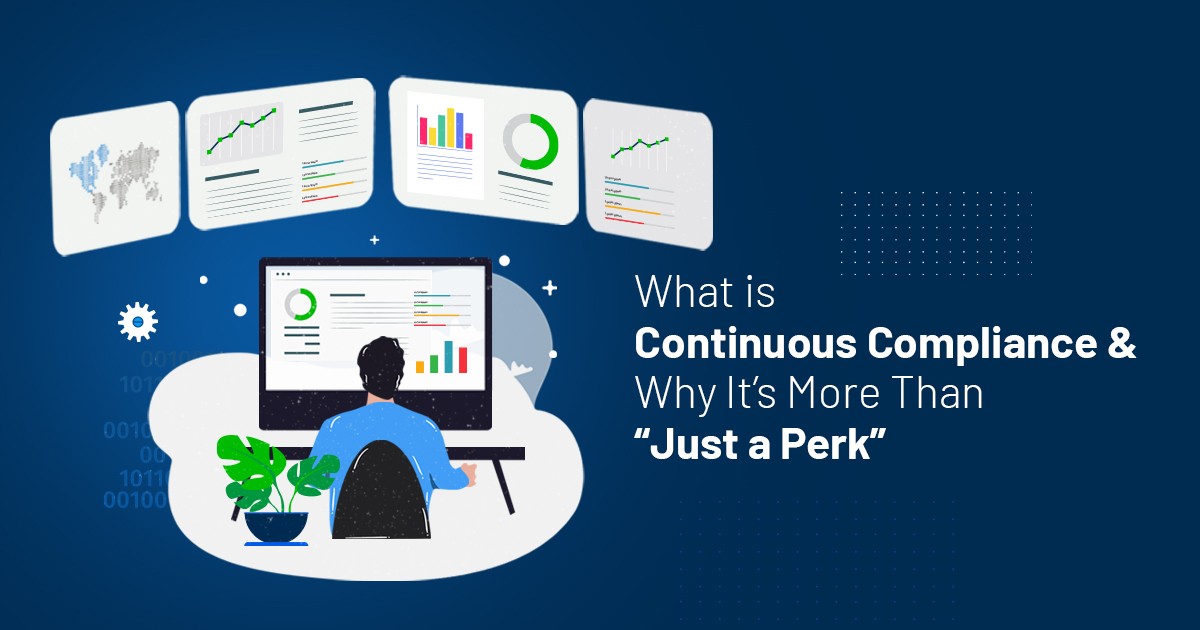Organizations are not new to grueling compliance audits that keep them up at night every quarter or year-end. To secure the PII (personally identifiable information) of consumers and corporate data, various industries and governments have drawn up security benchmarks that mandate periodic risk assessment along with safe data handling and storage. Some common security benchmarks in continuous compliance are HIPAA, ISO, NIST, etc. A compliance management tool can be used to make sure these security benchmarks are followed.
IT teams are mostly responsible for monitoring and hardening all IT assets according to these benchmarks. Even small deviations from industry benchmarks may lead to hefty fines for the company. In the worst-case scenario, a data breach due to ineffective compliance management policies may result in irreversible damage to the business’s reputation. To protect the devices from such attacks, a vulnerability management software can be helpful.
Making Endpoints Prime Focus of Continuous Compliance Audits
International Data Corporation (IDC) states that more than 70 percent of successful data breaches originate at endpoints. Since endpoints are at the IT infrastructure’s perimeter, they are the favorite targets for threat actors. Endpoints such as desktops, laptops, and servers are used to store and access all important data, making them an ideal target for a cyber-attack.
Even though all IT assets like data centers and cloud services should comply with security standards, endpoints should be at the top of your list. They are the most exploited gateways to networks and require the utmost attention.
Companies follow conventional methods of compliance audits to protect the endpoint. With this perception, the castle-and-moat security module comes into the picture. Further, this suggests the threats at external are the ones that pose a risk, and anything inside the organization’s perimeter can be utterly trusted. Over the years, this assumption ended when organizations began to incur expensive repercussions for sticking to this method. When attackers gain access to one endpoint, they can seamlessly traverse to other endpoints as well. In doing so, the valuable digital assets in an organization were put at risk.
Ditching Conventional Periodic Audits for Good
Most security compliance standards require organizations to conduct periodic compliance audits in their IT infrastructure once a quarter or a year to identify, assess, and mitigate risks. However, there is an innate flaw in this process. Periodic audits only give you instantaneous snapshots of your security posture. Three months (one quarter) is more than enough for hundreds of new vulnerabilities to surface in your network. By the time you wait for the next audit cycle, all your endpoints will be left hanging on the ledge holding on to sheer luck.
A more continuous approach to detecting non-compliant endpoints is the best solution to secure your endpoints truly and remain compliant with security standards. Perimeter security has become very complex today. With the adaptation of the enterprise network and work-from-home operation module, continuous compliance & assurance is the go-to way to address risks and mitigate them.
The new idea is to maintain the proactive approach of compliance rather than resorting to scrambling to bring out audits reactively.
Understanding Continuous Compliance & Assurance
Achieving continuous compliance in a modern-day multi-regulatory environment requires building a framework within the organization’s premises. Once the foundation is built, organizations can map their control to several frameworks as well as regulations in a single go. Further, it reduces and eliminates the need for unnecessary testing. With an effective crosswalk, you can efficiently test and reduce the prolonged fatigue that occurs during auditing.
Continuous compliance & assurance leads to an instantaneous victory by removing the need for employees to spend countless hours gathering evidence. The process could help you achieve productivity and a cost-effective method of operation. This proactive approach will simplify the overall compliance process of tracking security risks and response needs to address these risks in real-time.

